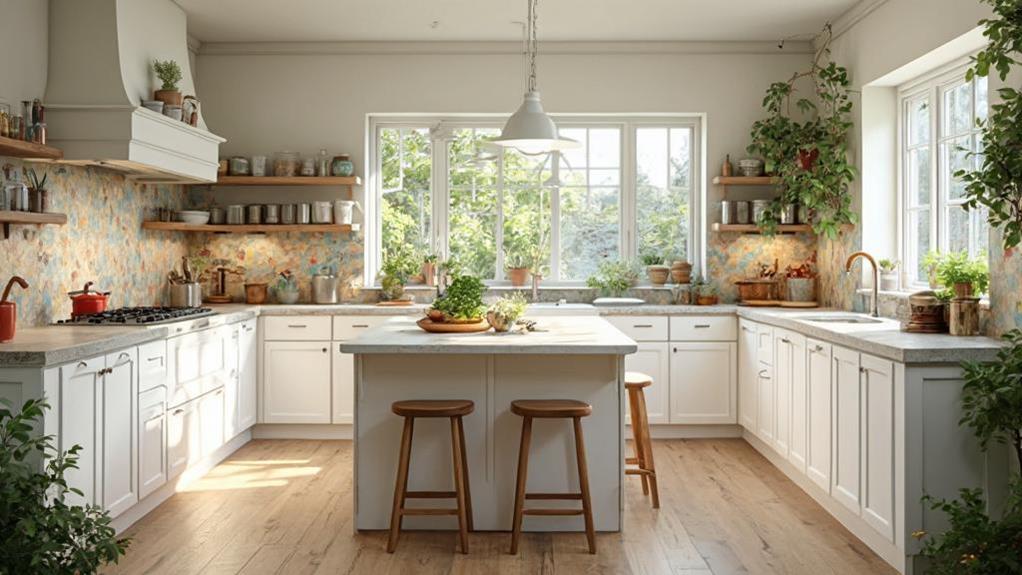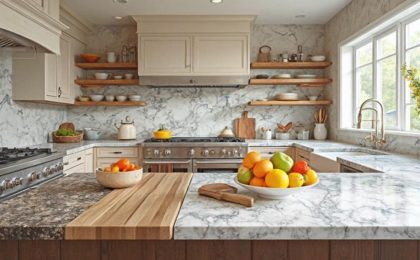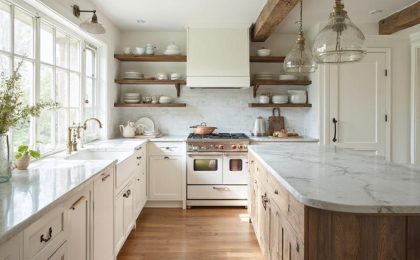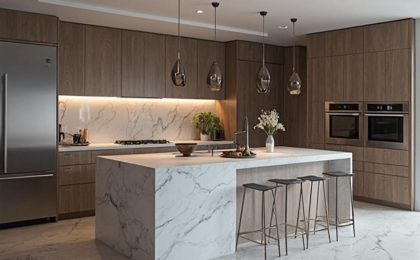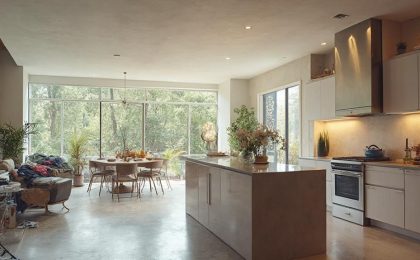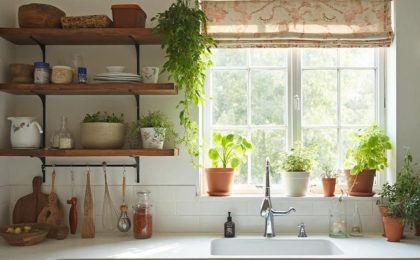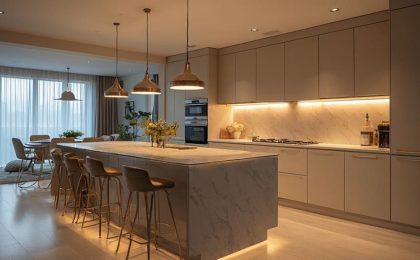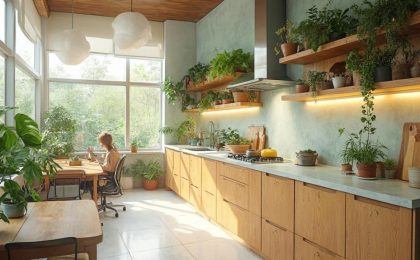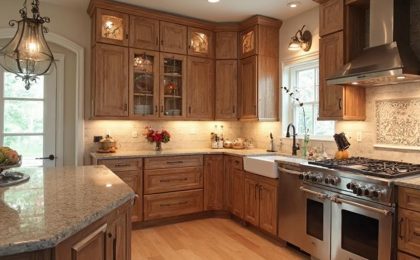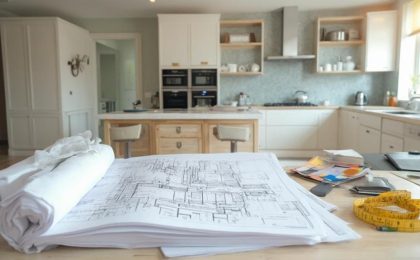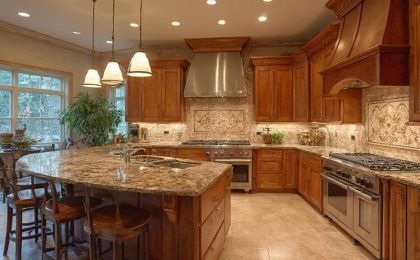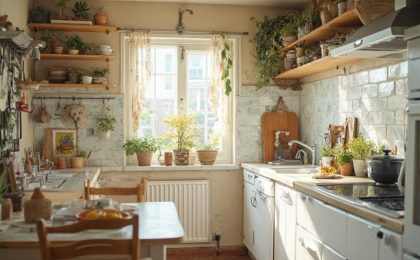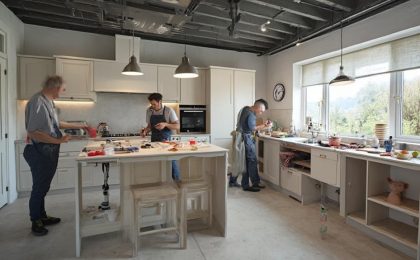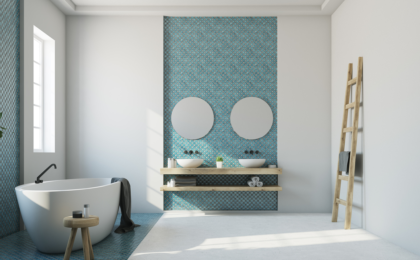When you're thinking about the perfect kitchen layout for your home, it's crucial to take into account your cooking habits and how your family interacts in this space. You might find that an efficient workflow between the sink, stove, and refrigerator makes a significant difference in meal preparation. Different layouts, like L-shaped or island kitchens, can cater to your needs and enhance social connections. But before settling on a design, you'll want to explore how other factors, such as space constraints and family dynamics, could influence your decision. What other elements should you keep in mind?
Key insights
- Assess your cooking habits to determine if you need quick meal solutions or space for elaborate dinners.
- Consider the size and shape of your kitchen to select a layout that maximizes space and efficiency.
- Evaluate family dynamics to create a kitchen that accommodates cooking together or allows for solo meal preparation.
- Prioritize functionality by ensuring a smooth workflow between the sink, stove, and refrigerator for optimal efficiency.
- Explore popular layouts like L-shaped, U-shaped, or island kitchens to find the best fit for your lifestyle and space constraints.
Assess Your Cooking Habits
When you think about your kitchen layout, it's essential to evaluate your cooking habits first. Consider how often you whip up quick meals versus elaborate dinners. If you're a fan of gourmet cooking, you'll want ample space for your kitchen appliances like mixers, blenders, and food processors.
Professional kitchen fitters can help you design a layout that meets your specific needs. Map out your cooking styles—do you grill, bake, or sauté? Each method requires different setups.
For instance, if you frequently bake, having your oven within easy reach of counter space is important. You might need a dedicated area for measuring, mixing, and rolling out dough.
On the other hand, if stir-fry is your go-to, positioning your stovetop near prep areas can streamline your process.
Think about how you move while cooking. Do you dart from the fridge to the sink to the stove? Keeping these elements close can reduce unnecessary steps and save you time.
Also, consider your kitchen appliances; if you use them daily, make sure they're easily accessible and organized. Evaluating your cooking habits will guide you in creating a layout that enhances your culinary experience, turning your kitchen into a haven of creativity and efficiency.
Consider Your Space Constraints
After evaluating your cooking habits, it's time to take a hard look at the space you have available. Understanding your kitchen dimensions is vital for choosing a layout that works for you. Measure your kitchen carefully, noting the location of doors, windows, and any existing appliances. This will give you a clear picture of what you're working with.
Additionally, consider consulting with professional tile fitters to guarantee that your kitchen design not only looks great but also adheres to building standards and enhances the overall aesthetic appeal.
Next, consider how you can maximize your space. If your kitchen is small, think about incorporating vertical storage solutions like shelves or cabinets that reach the ceiling. This not only frees up counter space but also keeps everything organized and within reach.
In larger kitchens, you might explore an island layout that provides extra workspace while adding storage underneath.
Don't forget about flow. Make sure there's enough room to move around comfortably, especially if you're cooking while others are nearby.
Keep in mind that a well-planned kitchen layout can enhance your cooking experience and make your time in the kitchen more enjoyable. By thoughtfully considering your space constraints, you'll set the stage for a functional and efficient kitchen.
Evaluate Family Dynamics
As you immerse yourself in designing your kitchen, consider how your family interacts in this space, since their dynamics can greatly influence your layout choices. Think about how often you host family gatherings, and how meal preparation plays a role in your daily life. Do your kids enjoy helping out, or do you prefer cooking in solitude? Understanding these dynamics will help you create a kitchen that fosters connection and functionality.
To help you evaluate your family's needs, here's a quick table:
| Family Size | Cooking Style | Gathering Frequency |
|---|---|---|
| Small | Quick Meals | Rarely |
| Medium | Family Meals | Occasionally |
| Large | Elaborate Dinners | Frequently |
| Multigenerational | Diverse Cooking | Regularly |
This table highlights the importance of considering family size, cooking style, and how often you gather. For instance, if you have a large family who loves to cook together, an open layout with ample counter space would be ideal. By evaluating these dynamics, you can design a kitchen that not only meets your practical needs but also enhances your family's shared experiences.
Explore Popular Kitchen Layouts
Choosing the right kitchen layout can transform not just the space, but also the way your family interacts within it.
For instance, L shaped kitchens are fantastic for creating an open flow, perfect for socializing while cooking. Engaging a professional kitchen fitter can enhance your renovation experience, ensuring expertise in layout design that maximizes both functionality and style.
If you need ample counter space, U shaped kitchens offer efficiency and storage while keeping everything within reach.
Galley kitchens, with their narrow design, are ideal for smaller homes, maximizing utility without sacrificing style.
On the other hand, island kitchens serve as a central hub, providing extra workspace and a gathering spot for casual meals.
Open concept kitchens seamlessly blend with living areas, encouraging family interactions and making entertaining a breeze.
Modular kitchens allow for flexibility in design, adapting to your changing needs over time.
If you crave a cozy, rustic feel, farmhouse kitchens bring warmth and charm, often featuring vintage elements and large tables for family gatherings.
In contrast, modern kitchens embrace sleek lines and minimalist aesthetics, perfect for those who prefer a contemporary vibe.
Each layout has its unique appeal, so consider your lifestyle and preferences as you explore these popular options.
Prioritize Functionality and Flow
When it comes to kitchen layouts, prioritizing functionality and flow can make all the difference in your daily cooking experience. Start by evaluating your workflow. Think about how you move between the sink, stove, and refrigerator—this triangle is the heart of your kitchen. Proper appliance placement is essential; you want your most-used items within easy reach to minimize steps while cooking.
Incorporate smart storage solutions to keep your kitchen organized. Here's a quick table to visualize how to maximize both functionality and flow:
| Area | Tip |
|---|---|
| Cooking Zone | Place pots and pans near the stove for quick access. |
| Prep Zone | Use pull-out drawers for cutting boards and knives. |
| Cleaning Zone | Keep dish soap and towels handy by the sink. |
| Storage Zone | Install shelves for jars and spices above the counter. |
| Appliance Zone | Position frequently used appliances like the toaster near the prep area. |
Frequently Asked Questions
What Are the Latest Kitchen Design Trends for 2024?
In 2024, you'll see kitchen design trends embracing open concept kitchens and minimalist designs that create a spacious feel.
Smart technology will enhance functionality, while multifunctional spaces cater to your lifestyle.
Bold colors and textured finishes bring personality, making your kitchen a vibrant hub.
Sustainable designs focus on eco-friendly materials, ensuring your choices are beneficial for the planet.
Don't forget ergonomic layouts, which prioritize comfort and efficiency in your cooking space!
How Can I Incorporate Eco-Friendly Materials in My Kitchen?
To incorporate eco-friendly materials in your kitchen, start by selecting sustainable countertops made from recycled glass or bamboo. They not only look stunning but also reduce your carbon footprint.
Next, consider installing recycled cabinets, which offer a unique charm while repurposing materials.
Don't forget to add energy-efficient appliances to round out your eco-conscious design.
What Appliances Should I Prioritize in a Small Kitchen?
In a small kitchen, you'll want to prioritize space-saving appliances that maximize your limited area.
Think about investing in multifunctional gadgets, like a microwave that doubles as a convection oven or a blender that can also chop.
These versatile tools not only save space but also streamline your cooking process.
By choosing wisely, you can create an efficient kitchen that meets your needs without overwhelming the area.
Enjoy your culinary adventures in your cozy space!
How Can Lighting Impact My Kitchen Layout Decisions?
Lighting plays a vital role in your kitchen layout decisions.
You'll want to take into account task lighting to illuminate work areas like countertops and stoves, ensuring you can cook and prep safely.
Ambient lighting creates a warm, inviting atmosphere, making your kitchen a social space.
By balancing both types, you can enhance functionality while adding charm.
Reflect on where you'll place fixtures to maximize both task and ambient lighting for an efficient, beautiful kitchen.
What Budget Should I Consider for a Kitchen Remodel?
When planning your kitchen remodel, consider a budget that balances your dreams with practicality.
Start by identifying remodeling essentials like cabinets, countertops, and appliances. Look for cost-effective solutions that don't compromise quality.
Allocate funds for unexpected expenses, too—kitchens often reveal hidden issues. Aim for a realistic total that allows for some flexibility, ensuring you can achieve a space that's both functional and stylish, reflecting your personal taste without breaking the bank.
Summary
In the end, choosing the perfect kitchen layout is all about you and your family's unique needs. By evaluating your cooking habits, space, and dynamics, you can create a kitchen that feels both functional and inviting. Whether you opt for a cozy L-shape or a spacious island, remember that the goal is to foster connection and efficiency. So roll up your sleeves, get creative, and design a kitchen that inspires delicious meals and cherished moments together.
